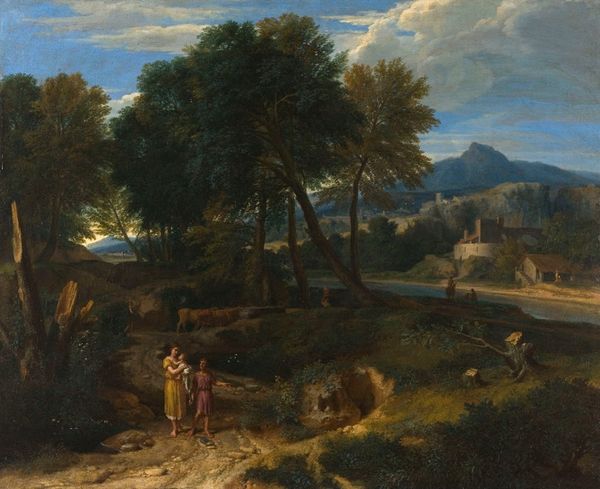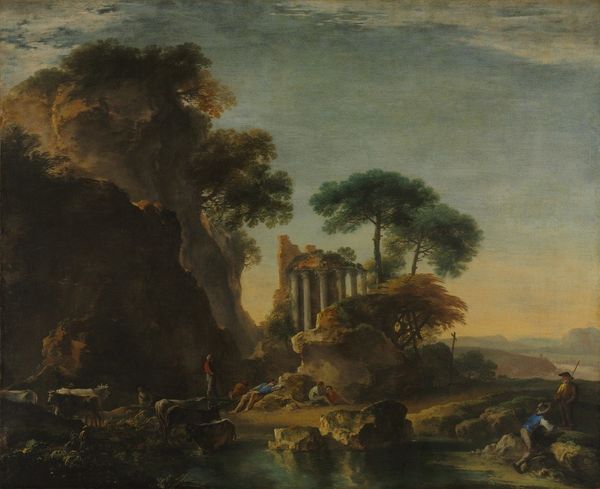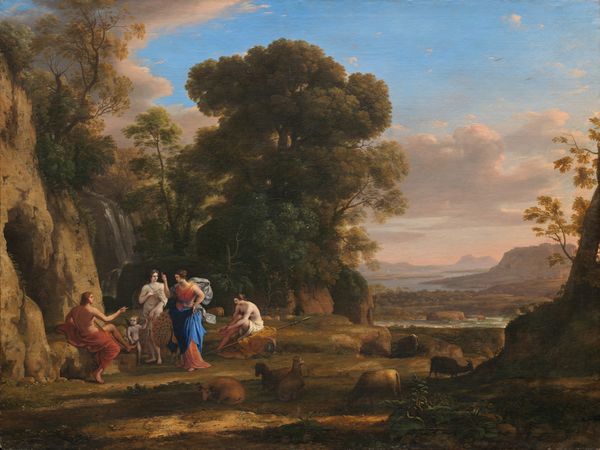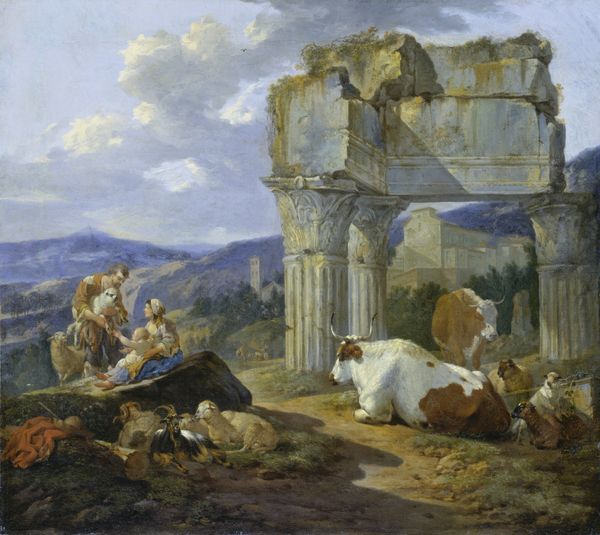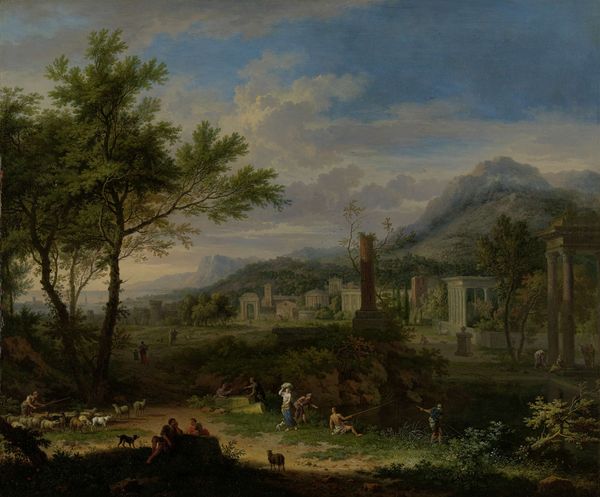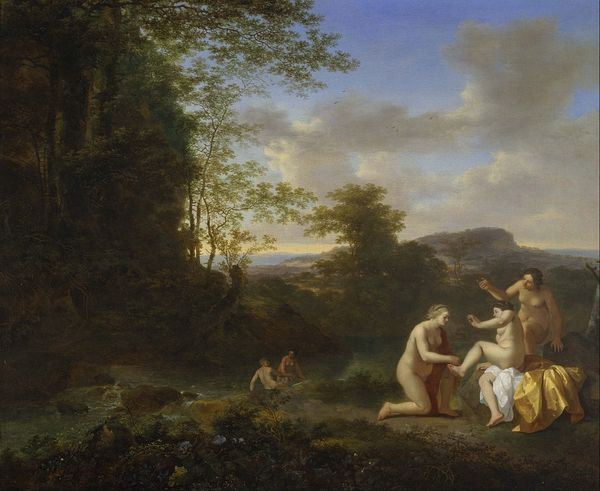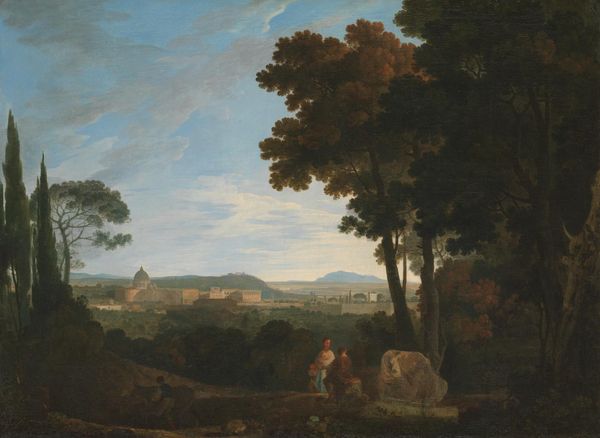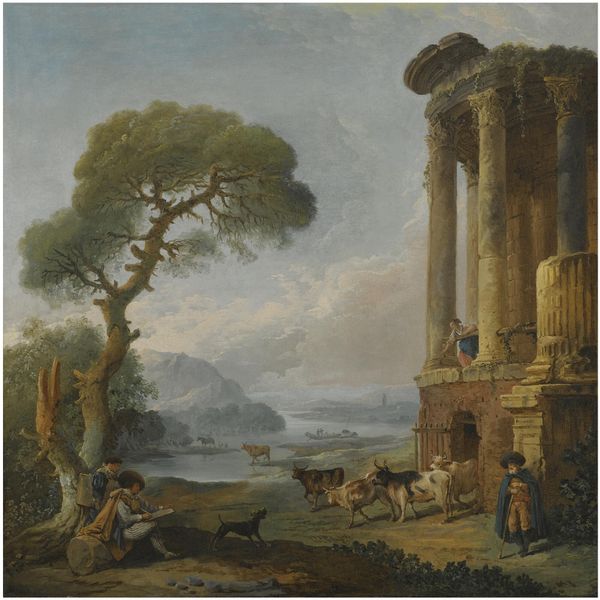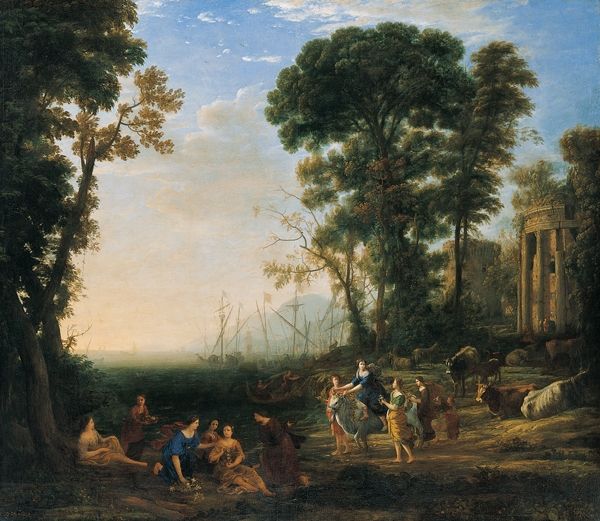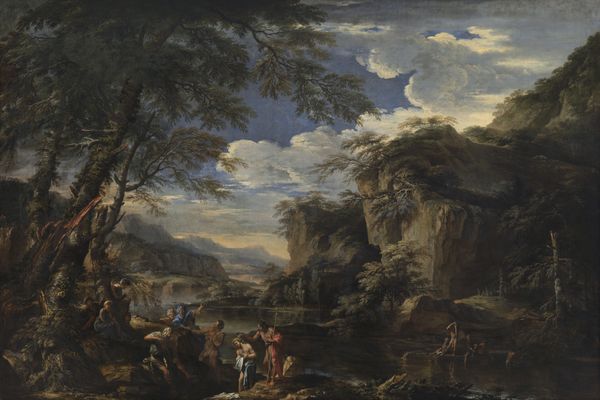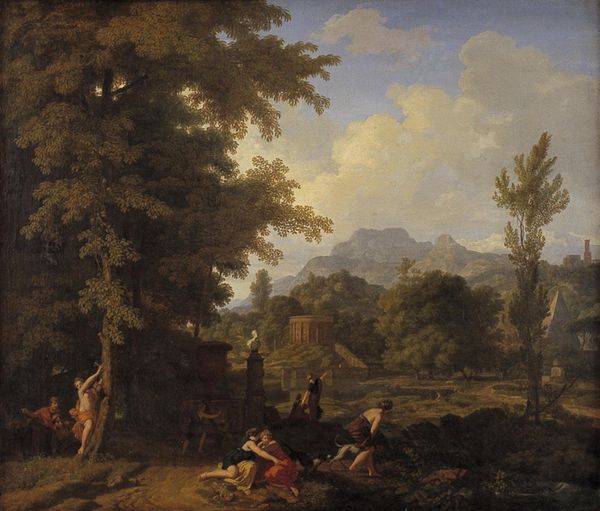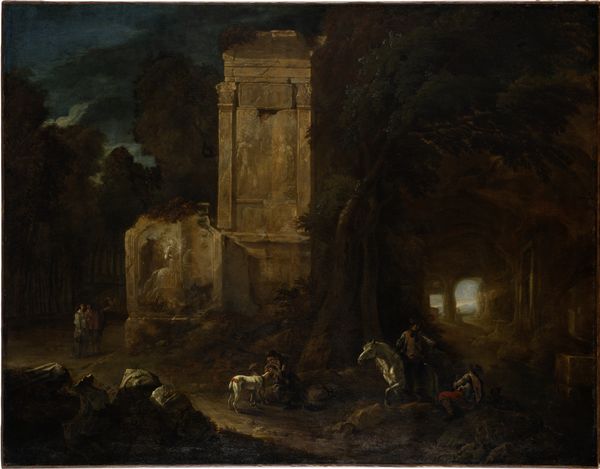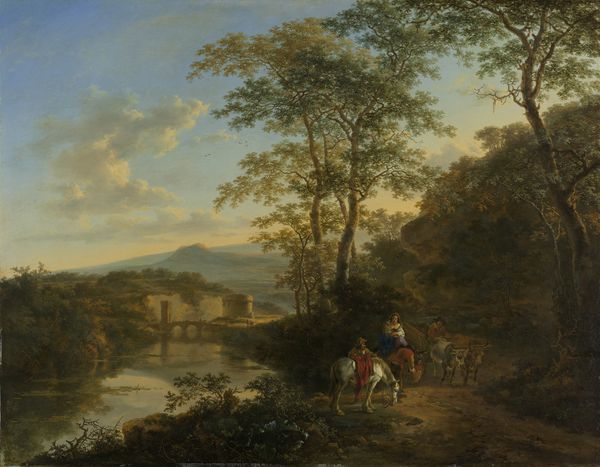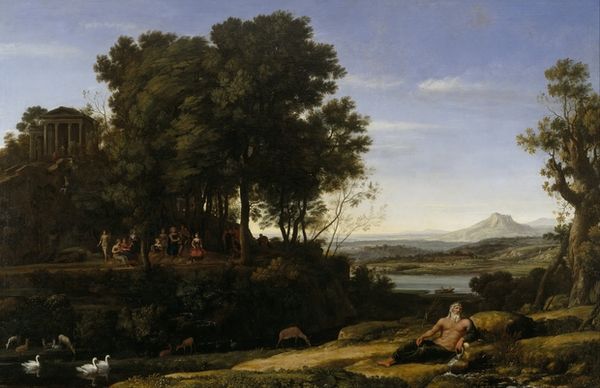
Dimensions: support: 1181 x 1708 mm frame: 1514 x 2050 x 115 mm
Copyright: CC-BY-NC-ND 4.0 DEED, Photo: Tate
Editor: Here we have Sir Charles Lock Eastlake's 'Lord Byron's Dream,' currently residing at the Tate. There's a real stillness to it, figures draped amidst classical ruins. What's your take on this scene? Curator: Eastlake presents Byron, the Romantic hero, within the picturesque landscape. How does this composition reinforce Byron's image and appeal to the sensibilities of the time? Editor: Hmm, I guess it's about positioning him in this classical, almost mythical setting. Curator: Exactly. The painting emphasizes the cultural fascination with Romanticism and the poet's own self-fashioning. The ruins and landscape are crucial to this. Editor: So it's as much about image-making as it is about Byron's poem, ‘The Dream.’ Thanks, that gives me a lot to think about. Curator: Indeed, and considering the painting's display within the Tate, it's another layer in the continuing legacy of Byron and Eastlake.
Comments
tate 6 months ago
⋮
http://www.tate.org.uk/art/artworks/eastlake-lord-byrons-dream-n00898
Join the conversation
Join millions of artists and users on Artera today and experience the ultimate creative platform.
tate 6 months ago
⋮
Charles Eastlake was one of Turner's younger friends. Like Turner he was an admirer of Byron's poetry. This picture, exhibited at the Royal Academy in 1829 , illustrates stanzas from Byron's poem The Dream and shows the poet resting on his Eastern travels. Eastlake finished the picture in Rome in 1827. Turner saw it during his visits to Eastlake in the city in 1828, and wrote to his friend to report its safe arrival at the Royal Academy in 1829. Gallery label, September 2002
